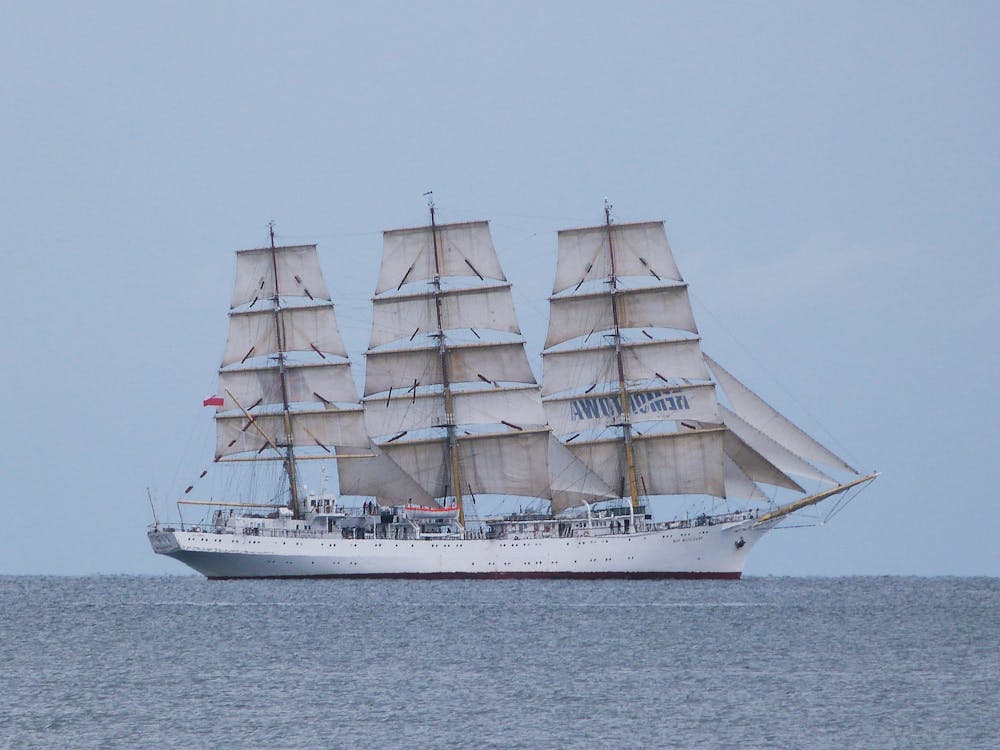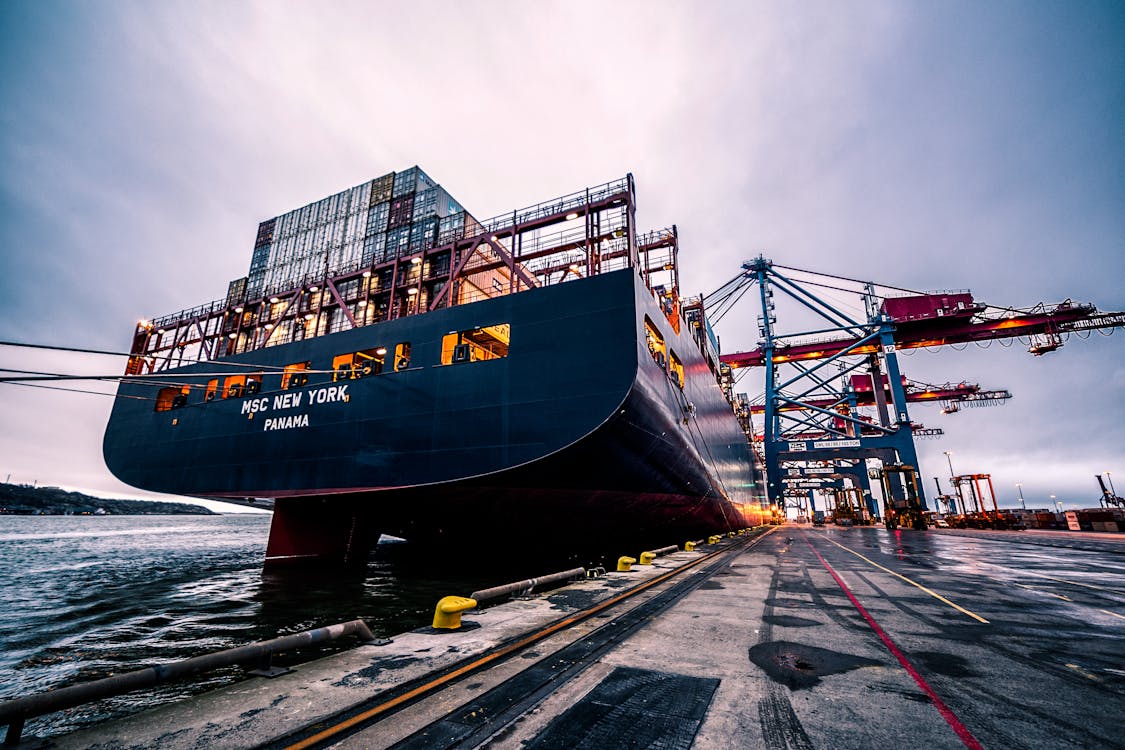Today, the sights of large cargo ships in major ports are common to the point where most people no longer ask “When were cargo ships invented?”
However, large cargo ships aren’t always like the way they are now. While humans have traded via sea routes for thousands of years, modern cargo ships are relatively new in the grand scheme of things.
Many things have changed so much since modern cargo ships were invented. Without them, it seems impossible to carry so much cargo that millions worldwide need for their daily lives.
Also Read: Preparing for 2025 Shipping Industry Trends: An Outlook
Pre-Modern History of Cargo Ships

In answering the question “When were cargo ships invented?”, let’s step back some thousands of years ago before now.
People began building early cargo ships as early as 5000 BC as an alternative to land-based trade routes.
Originally taking place only in the Arabian and Mediterranean Seas, sea maritime trades then multiplied significantly as European, Arabian, and Chinese traders began exploring the world more during the Age of Discovery.
During these centuries, cargo ships that used sails dominated the sea trade routes they were part of. Many traders used these ships to transport precious cargo across thousands of miles every day.
Upon entering the 19th and 20th centuries, more modern cargo ships began emerging. During this time, breakbulk cargo was a popular way of preparing and loading cargo for sea trade.
The term “breakbulk cargo” means goods people load into non-shipping container platforms like bags, barrels, crates, and drums.
While the breakbulk method is still in use today, it eventually becomes less popular than the more practical and secure shipping containers common in modern cargo ships.
Modern History of Cargo Ships

Once the Second World War was underway, many people began realizing the need for efficient and practical cargo ships that could carry numerous goods.
A popular example of early modern cargo ships is the Liberty Ship, a cargo ship class responsible for effectively supplying the Allied war effort during wartime.
However, the origins of modern cargo ships we know today can be traced back to Ideal X, a converted wartime T2 oil tanker ship owned by American businessman Malcolm McLean.
Widely known as the inventor of modern shipping containers, McLean was a veteran in the shipping industry thanks to his many contributions in popularizing containers.
When McLean decided to commercialize containers for businesses, the shipping industry was awash with numerous problems including inefficient, slow, and expensive cargo handling.
Seeing these problems as things that need solutions, McLean used Ideal X to pave the way for the use of shipping containers as more cost-effective platforms.
In that regard, Ideal X departed from Newark Port on a momentous maiden voyage to Houston Port on April 26, 1956. Measuring around 524’ x 30’ x 68’, Ideal X marked a significant departure from regular cargo ships in terms of specifications at the time.
Apart from the ship’s specifications, MacLean designed 58 shipping containers the ship brought to fit the ship’s hold and the US’ standard truck sizes at the time.
Once arriving in Houston, Ideal X only needed less than eight hours to unload all its cargo, unlike earlier ships that would’ve needed more time to do so. Since then, Ideal X had a relatively short operational time before being eventually scrapped in Hirao, Japan on October 20, 1964.
Later Development of Modern Cargo Ships

While Ideal X was widely seen as the pioneer of modern cargo ships, Clifford J. Rogers was credited as the world’s first purpose-built cargo ship.
After launching in 1955, Clifford J. Rogers transported hundreds of shipping containers in various shipping freights in Alaska and Canada.
Sometime later in May 1964, Australian company Associated Steamships launched MV Kooringa, the world’s first cellular vessel that could stack containers on top of each other for efficient cargo freight.
With the introduction of these world’s firsts, many shipping companies worldwide began using modern cargo ships more due to their economic benefits.
Today, there are approximately between 50,000 and 60,000 cargo ships around the world since the introduction of Ideal X.
Most modern cargo ships can carry goods up to 24,000 TEUs (twenty-foot equivalent units). Here, they can now carry hundreds of shipping containers at once thanks to their purpose-built constructions.
In fact, the world’s currently largest cargo ships including MSC Irina and MSC Loreto can carry containers up to more than 24,300 TEUs, 16 or 17 times more than what pre-World War II cargo ships can carry.
Impact of Modern Cargo Ships

While it’s easy to say cargo ships drive the global economy when thinking “When were cargo ships invented?”, their overall impact is more than that.
Facilitation of International Trade
Cargo ships enable the efficient movement of goods across oceans, connecting producers and consumers globally. They carry approximately 90% of the world’s traded goods, including raw materials, machinery, and finished products. As a result, international trade becomes even more feasible and cost-effective.
Economic Growth and Development
Maritime shipping stimulates economic growth by fostering trade relationships between nations. Ports and associated industries, such as shipbuilding and logistics, create jobs and contribute to the GDP of many countries.
Cost-Effective Transportation
Cargo ships offer the most economical means of transporting large volumes of goods over long distances. This low-cost transportation reduces the final price of products that can benefit businesses and consumers.
Global Supply Chain Support
Modern supply chains rely heavily on cargo ships for just-in-time manufacturing and delivery. They significantly help electronics, automotive, and retail companies by ensuring raw materials and products arrive on time.
Market Accessibility for Developing Nations
Developing countries can have access to global markets via maritime shipping. This connectivity allows them to export agricultural products, textiles, and other goods. Furthermore, this connectivity also boosts their economies and integrates them into the global trade network.
Technology and Innovation in Logistics
The growth of cargo shipping has spurred advancements in logistics and shipping technologies. Containerization, automated port operations, and tracking systems, for example, wouldn’t be here without the development of modern cargo ships.
Economic Clusters Around Ports
Ports often become hubs for economic activity and attract industries like manufacturing, warehousing, and retail. In turn, this concentration of economic activity can stimulate local and regional economies.
Resilience and Vulnerability in Global Trade
Cargo ships make global trade resilient to some disruptions. However, they also expose economies to problems like port congestion, piracy, and supply chain disruptions (e.g., the COVID-19 pandemic).
Also Read: Cut Container Shipping Costs with the Best Practices
Conclusion
Now that we have the detailed answer to the question “When were cargo ships invented?”, we can see how important they are for our lives. Without these ships and shipping containers, our quality of life wouldn’t be as good as it is. Do you need some shipping containers to transport cargo to other states or countries? Then contact Tradecorp today via its quote form! Offering containers of various dimensions, Tradecorp is ready to meet the industrial needs of varying niches.


